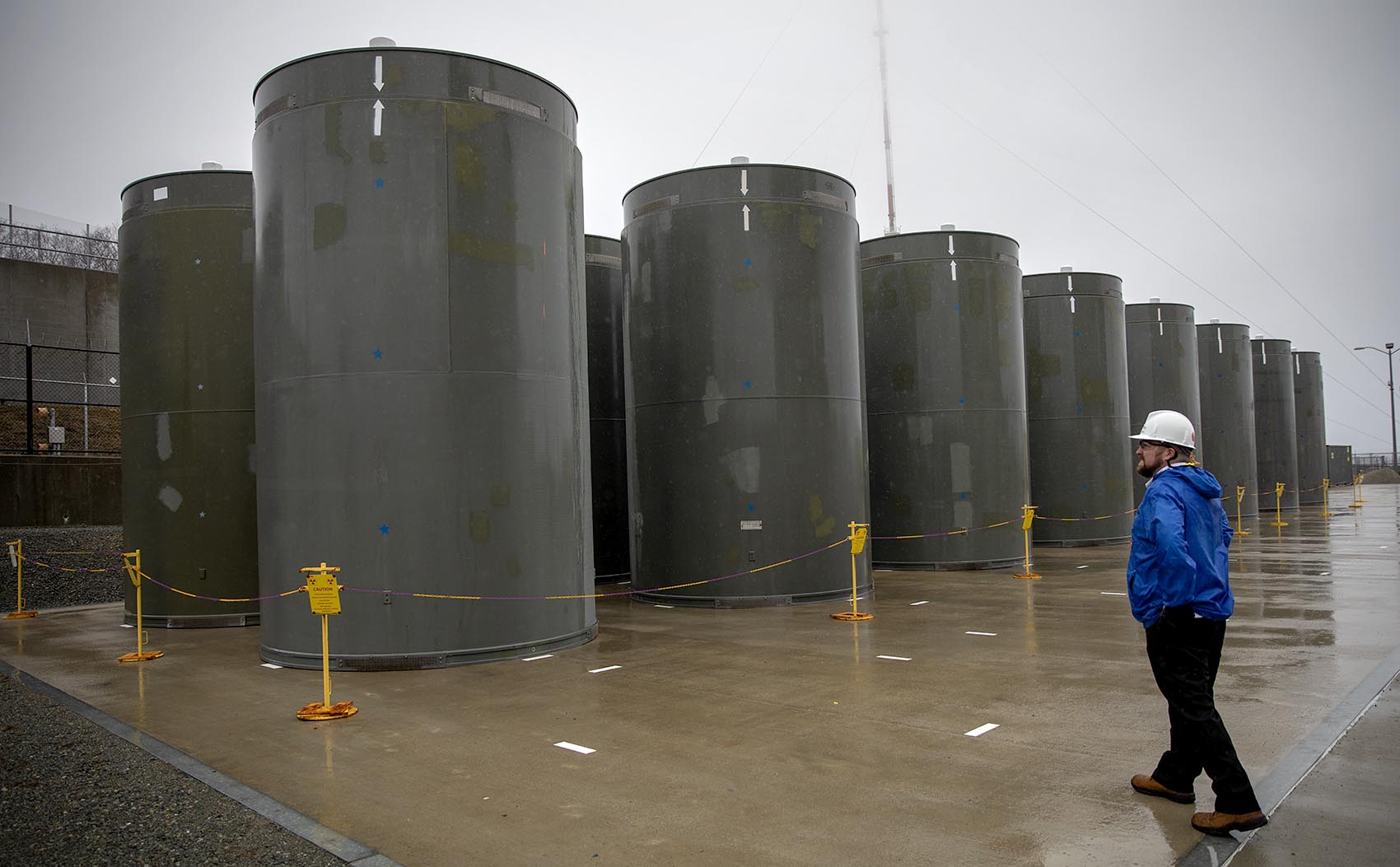Pilgrim Is Closing. So Then What Happens To The Radioactive Waste?
This week, Pilgrim Nuclear Power Station will power down for the last time.
Over the next few years, workers will move the radioactive fuel into storage, dismantle the plant, and clean up the site. The process is called decommissioning, and a lot of people are worried about safety, cost and where the nuclear waste will finally end up.
The biggest source of radioactivity at Pilgrim is the plant’s fuel assemblies, which power the reactor. Entergy, the company that owns Pilgrim, says there are 580 fuel assemblies currently in the reactor, and another 2,378 used assemblies cooling off in the blue water of the plant’s spent fuel pool. That’s in addition to 1,156 stored outside the plant in huge containers.
All together, there are 4,114 fuel assemblies at Pilgrim. They’ll stay radioactive for thousands of years. And with nowhere to put them — for now, at least — they’ll stay in Plymouth indefinitely.
“With no repository in sight, Plymouth — America’s hometown — will be a nuclear waste dump,” says Diane Turco, executive director of the watchdog group Cape Downwinders. “No one knows what to do with this waste. … So I think we need to prepare that it’s going to be in Plymouth for a long time.”

